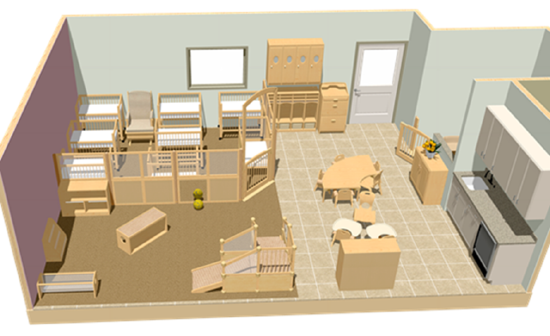27.3: Key Environment Elements
- Page ID
- 142387
What to Include
There is substantial agreement internationally about what is essential in providing for children’s developmental needs in center-based childcare (e.g., Lamb and Ahnert 2006). Universally recognized core elements required for children’s positive development are: safe and healthy care settings, developmentally appropriate stimulation and opportunities for learning, positive interactions with adults, and the promotion of individual emotional growth and positive relationships with other children (Cryer et al. 2002) (Verner et.al, 2016). Spaces for infants and toddlers can be organized to support a variety of exploration and routines. Most often, the arrangement of play spaces supports different types of learning and experiences, such as: (Lally, Stewart, and Greenwald 2009)
- Small-muscle activity
- Sensory perception
- Large-motor activity
- Creative expression
Additionally, caregivers need space for infant and toddler routines: greetings, departures, eating and feeding, sleeping, diapering, and toileting.
Other areas of exploration to consider when creating an environment include block play, fantasy play, multilevel areas, quiet areas to explore books, and cozy areas (WestEd, n.d.). Dividing the room into areas creates an organized and meaningful environment.

Image by Community Playthings is used with permission
Not only do the types of experiences an environment supports need consideration, but the infant and toddler environment should also:[1]
- Ensure safety
- Promote health
- Provide comfort for children and adults
- Be convenient for children and adults
- Be child-sized
- Maximize flexibility
- Encourage movement
- Allow for choice
- Ensure accessibility
These concepts help programs focus on the overall impact of the entire environment on infants, toddlers, and the adults who care for them.[2]
[1] California Department of Education (CDE Press). Development Foundations: Social-Emotional Development . Is used with permission
[2] California Department of Education (CDE Press). Development Foundations: Social-Emotional Development . Is used with permission

